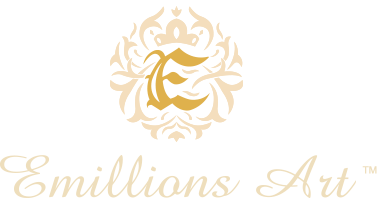“Historical documentation” refers to a wide range of written, visual, and archival sources that provide information about the historical and contextual aspects of artworks, artists, art movements, and the art world. Such documentation is integral to art historical research and serves as a foundational resource for understanding art’s development, significance, and cultural impact.
Key elements of historical documentation in the context of fine art include:
Primary Sources: These are original documents and artifacts from the past, including letters, diaries, manuscripts, photographs, sketches, and official records. Primary sources offer firsthand accounts and evidence of historical events, artistic practices, and the lives of artists.
Secondary Sources: These encompass scholarly works, publications, exhibition catalogs, critical reviews, and academic research that interpret and analyze primary sources. Secondary sources provide insights and contextualization of art historical subjects.
Archives and Collections: Art archives and collections house a wealth of historical documents, such as correspondence, contracts, exhibition records, and other materials related to artists, galleries, museums, and art dealers. Researchers often consult these repositories for in-depth historical research.
Correspondence: Artists’ letters, as well as their correspondence with patrons, colleagues, and critics, are valuable primary sources that offer personal insights into the artists’ creative processes, relationships, and experiences.
Periodicals and Reviews: Historical art magazines, newspapers, and art criticism provide contemporaneous accounts of exhibitions, art movements, and critical responses. These sources help reconstruct the reception and perception of art in its time.
Catalogs Raisonnés: Comprehensive catalogs raisonnés compile detailed records of an artist’s body of work, documenting each known artwork and its relevant details, provenance, and exhibition history. These catalogs are invaluable for authentication and attribution.
Exhibition Records: Records of art exhibitions, including catalogs, installation photographs, and visitor comments, help trace the history of an artwork’s display and its reception by the public.
Auction Records: Historical auction catalogs and results provide insights into the market value and demand for artworks, helping to track the provenance and market history of specific pieces.
Artist Statements and Writings: Artists’ statements, manifestos, and writings contribute to our understanding of their artistic philosophies, motivations, and the intellectual context of their work.
Documentation of Art Movements: Historical documentation often includes records and publications related to art movements and schools, shedding light on their origins, principles, and influence.
Archival Research: Art historians frequently engage in archival research to uncover hidden or overlooked historical documents, deepening our understanding of artists, collectors, and institutions.
Historical documentation is fundamental for establishing artworks’ provenance, context, and significance. It provides a rich source of material for art historical research, contributing to the narrative of art history and ensuring that artworks are situated within their cultural and historical milieu. Scholars rely on these resources to advance their art knowledge and produce authoritative and well-informed analyses and interpretations.



